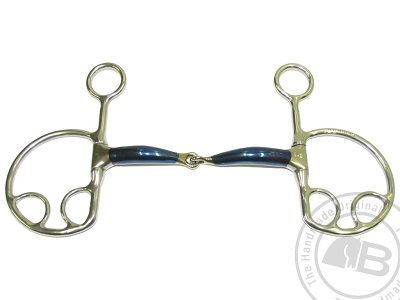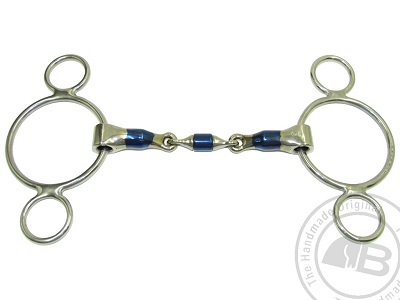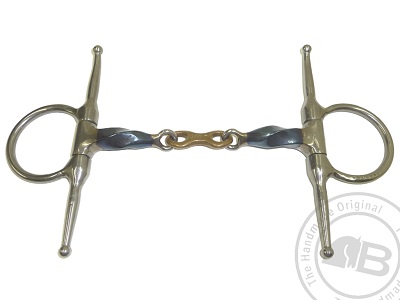Posted: 25th March 2020 | Back to news feed

One Minute Reads – a series of bite-sized reads. Here, we look at bits and their actions (part 1)
Bitting is complex, in that we have two components that affect each other; the mouthpiece and the cheekpiece. The mouthpiece is the most important component of the bit, to the horse. The mouthpiece determines where pressure is being placed in the mouth. The cheekpiece can add extra pressure points, increase the strength of the pressure, and in very special cases, help to lessen the pressure; but it cannot completely change where the pressure is placed in the mouth. It is best to break the bit down into mouthpiece and cheekpiece. In part 1 of this three-part series, we will address some common mouthpieces.
Single Break
The most common mouth piece has historically been the snaffle.
Simple does not always equate with soft. The snaffle creates a squeezing pressure on the bars; this pressure asks the horse to lift their head. In most cases, this is the opposite of what the rider requires of the horse, and we end up fighting the horse, when he is simply responding to what we are asking. Very small changes can make a large difference in how the horse accepts the mouthpiece. When more curve is added to a snaffle, this allows the bit to wrap around the mouth, touching more surface area, and softening the pressure.
Double Break
The term ‘double break’ covers a lot of ground. All this tells us is that the mouthpiece has two joints. A double broken bit could be an Elliptical, French Link, Control Plate or McHardy. It could have free range of motion on the sides, or this movement could be limited by the mouthpiece being locked. Each of these mouthpieces works very differently. It is important to note the length of the middle piece, as well as the angle at which it sits, and how much movement is allowed.
Elliptical

An Elliptical is defined by a rounded middle piece. There are many variations of the Elliptical and each manufacturer will have a few different designs. The Elliptical is designed to place pressure on the tongue, asking the horse to lower their head and bring the nose in. This only works if the horse can accept pressure being placed on the tongue. The length of the middle piece determines the ratio of tongue to bar pressure; the shape and angle of the middle piece changes how pressure is distributed.
French Link

The angle of the French Link allows the plate to sit at an angle on the tongue; this reduces the surface area over which the pressure is spread, making the pressure stronger.
In Part 2 we will look at: Semi Broken, Lock up, Solid, Happy Tongue, Mullen, Flexible and Waterford Barrel mouthpieces. In Part 3 we will look at cheekpieces.
Contact 01825 840002 for stockists of Bombers Bits.
The Equestrian Index newsfeed is compiled from articles submitted by advertising members and expresses the opinions of those members. Watsons Directories Ltd shall not be held liable for any inaccuracies or mis-statements therein.
